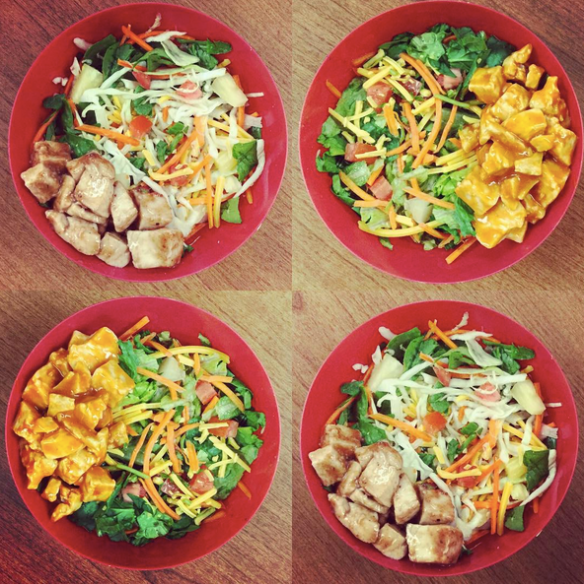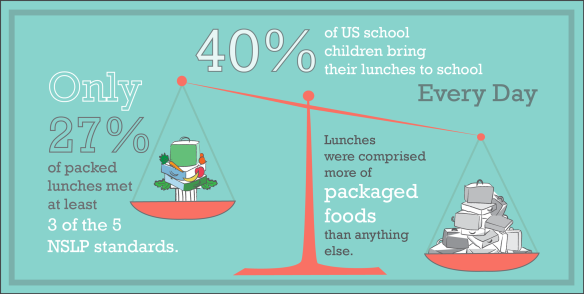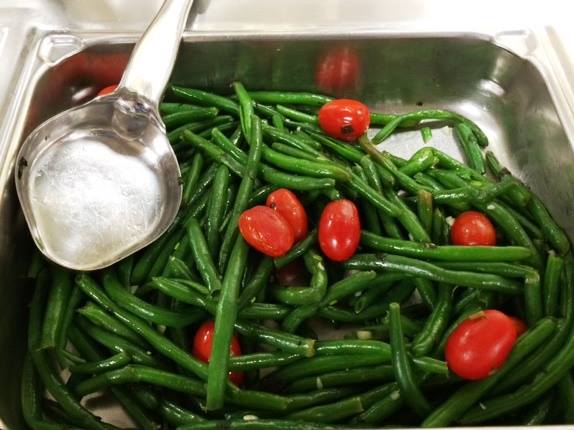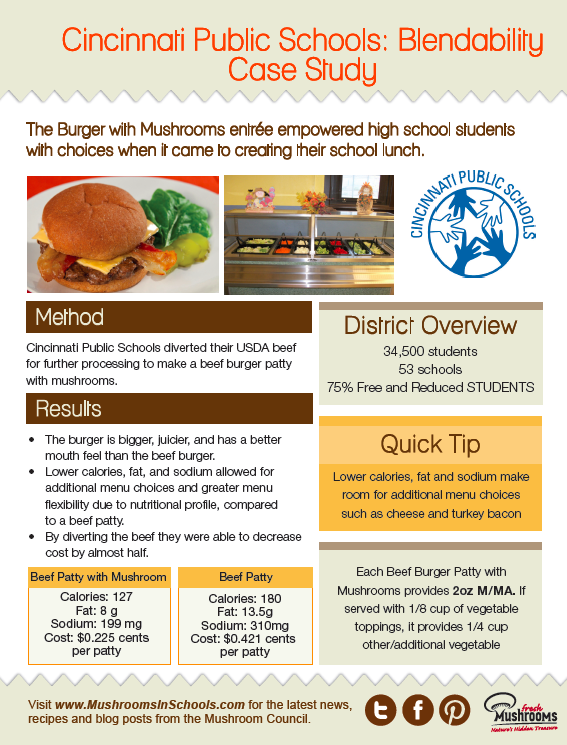By Dayle Hayes, MS, RD
NOTE: This blog was originally posted in April 2015. Sadly, more than two years later, some of the same lunch haters are still sharing the same out-of-date photos and information. Seriously, it is 2017 and #RealSchoolFood has evolved across the USA. Read my 10 reasons below, then go help serve #SummersMeals to hungry kids in your community. THAT is where the child really meets the tray!
To all the mommy bloggers, food celebrities, academic researchers, restaurant chains and media channels who want to blame School Lunch for the ills of the US food system (while promoting their own products, endorsements and programs), it’s time to STOP. Trying to refute your inaccurate claims, staged photos, out-date sound bites and negative descriptions is a waste of precious time we could be working together to support #RealSchoolFood for real hungry kids all across America. If you really want to improve school meals, here are 10 effective ways to support the hard-working school nutrition HEROES who are reshaping local and national food systems, teaching kids about where food comes from, and feeding millions of children their best meals of the day – every day – in thousands of schools across our country.
#1: Please get some real photos of #RealSchoolFood. Your staged, stock and decades-old examples do a terrible disservice to the dedicated chefs and cooks who offer gorgeous cafeteria lines, produce bars and grab-n-go options to students every day. Need help finding photos? We’ve got your back with thousands of photos on Facebook and Pinterest. Tray Talk also features #RealSchoolFood from hundreds of districts. These gorgeous salads are from Polk County Schools in Florida.

New Chopped Salads on the menu this Fall! Asian Chicken and Buffalo Chicken. Polk School Nutrition, Polk County, Florida
#2: Please move on from ‘ketchup is a vegetable.’ Seriously people, check your facts. This was a stupid proposal in 1981 which never made it into a regulation. Before you complain, learn the details of the Healthy, Hungry-Free Kids Act of 2010. There are specific requirements for five different vegetable sub-groups, including Red-Orange. This is how schools are promoting colorful produce and #RealSchoolFood to students all across Tennessee this fall.

These gorgeous banners, shown here by Chelsea Cordes, RDN, in Shelby County Schools, are a healthy collaboration between the Department of Education and the Governor’s Foundation for a Healthy Tennessee.
#3: Please read the research comparing school lunch to lunches brought from home. Studies from Baylor (TX), Tufts (MA) and Virginia Tech (VA) confirm that lunches brought from home rarely meet the tough nutrition standards now required in all USDA school meals programs. Many contained sugary drinks and snack foods that cannot be sold as #RealSchoolFood.

A Tufts study published Journal of the Academy of Nutrition and Dietetics showed lunches brought from home had lots of packaged food and sugary drinks
#4: Please dig deeper into the causes of food waste in schools. Kids throw away perfectly picked organic oranges and bento box baby bananas with cute notes written on them – just like they throw away school lunch items. Two of the best solutions to reducing food waste in cafeterias work for #RealSchoolFood and lunches brought from home: Recess Before Lunch and Longer Lunch Periods
#5: Please recognize that school nutrition professionals frequently do not have needed administrative support. School nutrition heroes have a tough balancing act with complex government regulations, limited budgets and limited input into school schedules that affect recess options and the length of lunch periods. Like you, they care deeply about feeding children well – and are trying to do the best they can with what they have. Maybe you can work together on a grant for a salad bar or school garden? Many of the #RealSchoolFood veggies served in Kalispell, Montana, schools come directly from the school garden.

Kalispell, Montana, Schools feature greens grown at school. A fabulous director and FoodCorps Montana work together to grow #SchoolGardens, serve #RealSchoolFood and nourish healthy eating habits.
#6: Please talk WITH rather than AT school nutrition directors. Arrange a friendly meeting with your local nutrition director. Find out about their everyday challenges and what changes they would make if they could – maybe new equipment or more local foods. Find out how you can work together to do what’s best for kids. If you look for common ground, you are likely to find it. Believe every school should have a school garden? Get out there and help a school grow one for #RealSchoolFood to be served in your district. The amazing Waterford Edible Schoolyard has dozens of amazing volunteers, especially during the busy summer months.

THANKS to the Waterford Edible Schoolyard: “72 pounds delivered to the kitchen today – bringing our total to 175+ lbs since June! The peas are in with a vengeance, tomatoes are starting to ripen, and we can’t seem to pick the cucumber and zucchini fast enough smile emoticon.”
#7: Please be realistic because nutrition perfection is just not possible on $1.50-1.75 per meal. That’s how much the average school district has to spend directly on food. While meal prices and USDA reimbursement rates provide more money, that also goes to pay for labor, equipment and overhead costs. If you want all organic, GMO-free, clean-label, local, scratch-cooked meals, you are going to have to help schools lobby local, state and federal decisions makers to provide more money for school meals. 2015 is a critical year for child nutrition and childhood food insecurity. This fall Congress will reauthorize funding for the critical local programs that support healthy children, schools and communities, including School Breakfast Programs, National School Lunch Programs, WIC Programs and Farm to School Programs. 2015 is a time to advocate for fresh, local, delicious #RealSchoolFood rather than pointing fingers and telling families “avoid school lunch like the plague.” THIS is #RealSchoolFood lunch in Greenville, South Carolina.

On August 20, 2015, Greenville County Schools students will have the option to choose from Turkey Pot Roast with a fresh baked roll, Scratch-made Mac-N-Cheese, a Fresh Fruit and Veggie Bar with four options of fresh fruit and four options of steamed vegetables, and ice cold milk!
#8: Please eat a #RealSchoolFood lunch. Send a message with your location to SchoolMealsThatRock@gmail.com and I’ll recommend a #RealSchoolFood cafeteria nearby you can enjoy hot lunch or a grab-and-go salad like these from Provo School District, Provo, Utah.

Grab n Go Salads at the secondary level and Chef Salads at the elementary level. First day choices first day delicious!
#9: Please consider the consequences of your criticisms. Be respectful and ditch blanket descriptions of school food like “hideous piles of indistinguishable vegetables” and “avoid like the plague.” When you use negative and judgmental language, it makes parents feel badly about letting their children eat at school, even if they can’t afford to pack a meal from home. Dedicated school nutrition heroes deserve your respect and thanks for all their training and hard work to feed kids #RealSchoolFood every day. This is why they do it – smiling face of hungry students, like this girl in Bradley County Schools, Cleveland, Tennessee.

North Lee Elementary Pre-K. Beautiful, healthy tray for smiling faces.
#10: Please be transparent about the companies who sponsor your post or blog or program. If your blog ends with photos of branded food products and lunch boxes, please indicate if they are sponsors or advertisers. I do consulting work for a variety of agricultural groups and a few companies, which are all disclosed below. Not a single one of them supported this post or provided input in any way.
- Board Member/Advisory Panel
- American Association of School Administrators (AASA) Breakfast Council
- Kellogg’s Breakfast Council
- Consultant
- US Department of Agriculture and Team Nutrition Program
- Multiple state departments of education and agriculture
- California Walnut Commission
- The Mushroom Council
- Cherry Marketing Institute
- American Egg Board
- CLIF bar
- Chobani Yogurt
- Bush Beans
- Speaker’s Bureau
- National Dairy Council and state/regional dairy councils
- National Cattlemen’s Beef Association and state beef councils









































